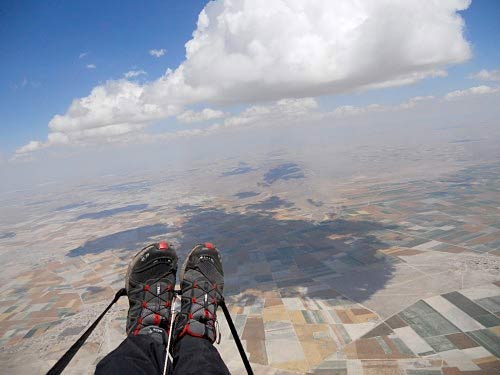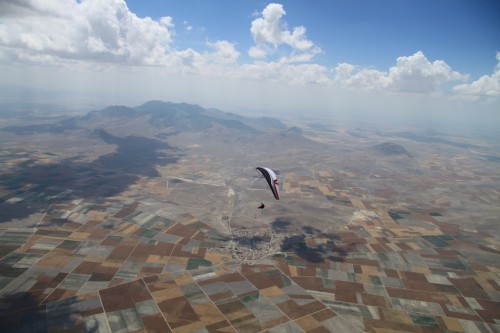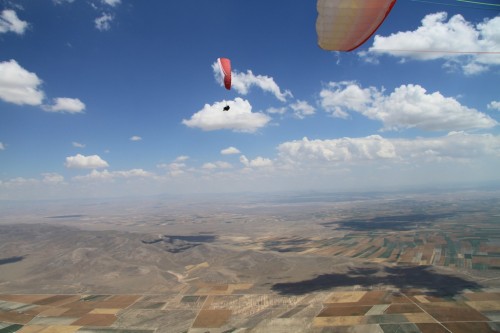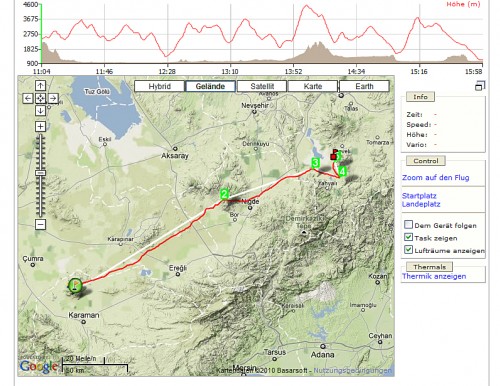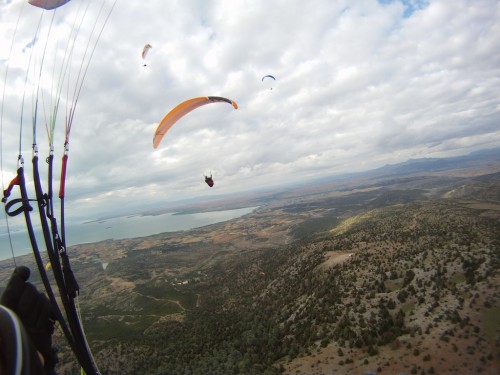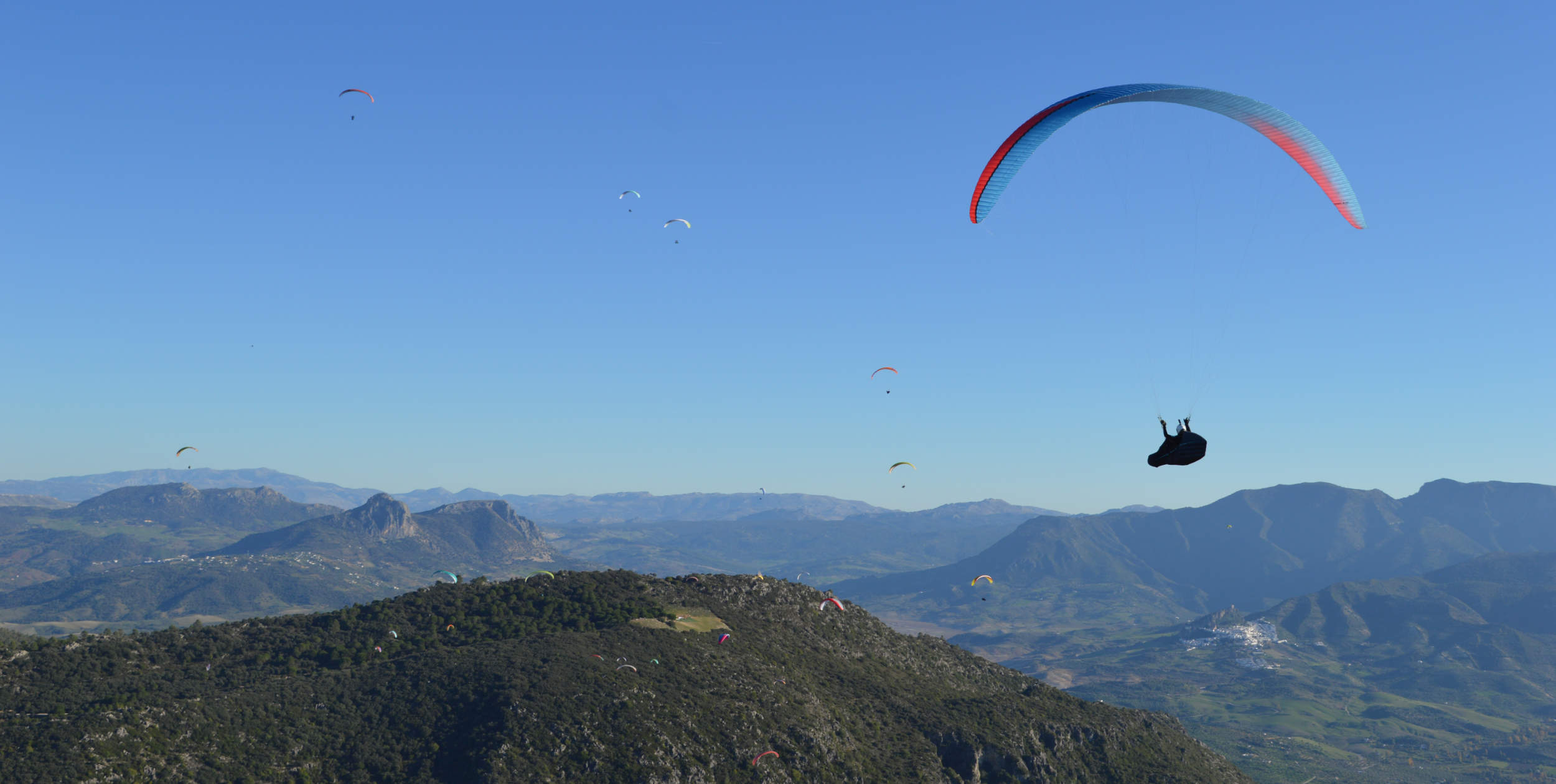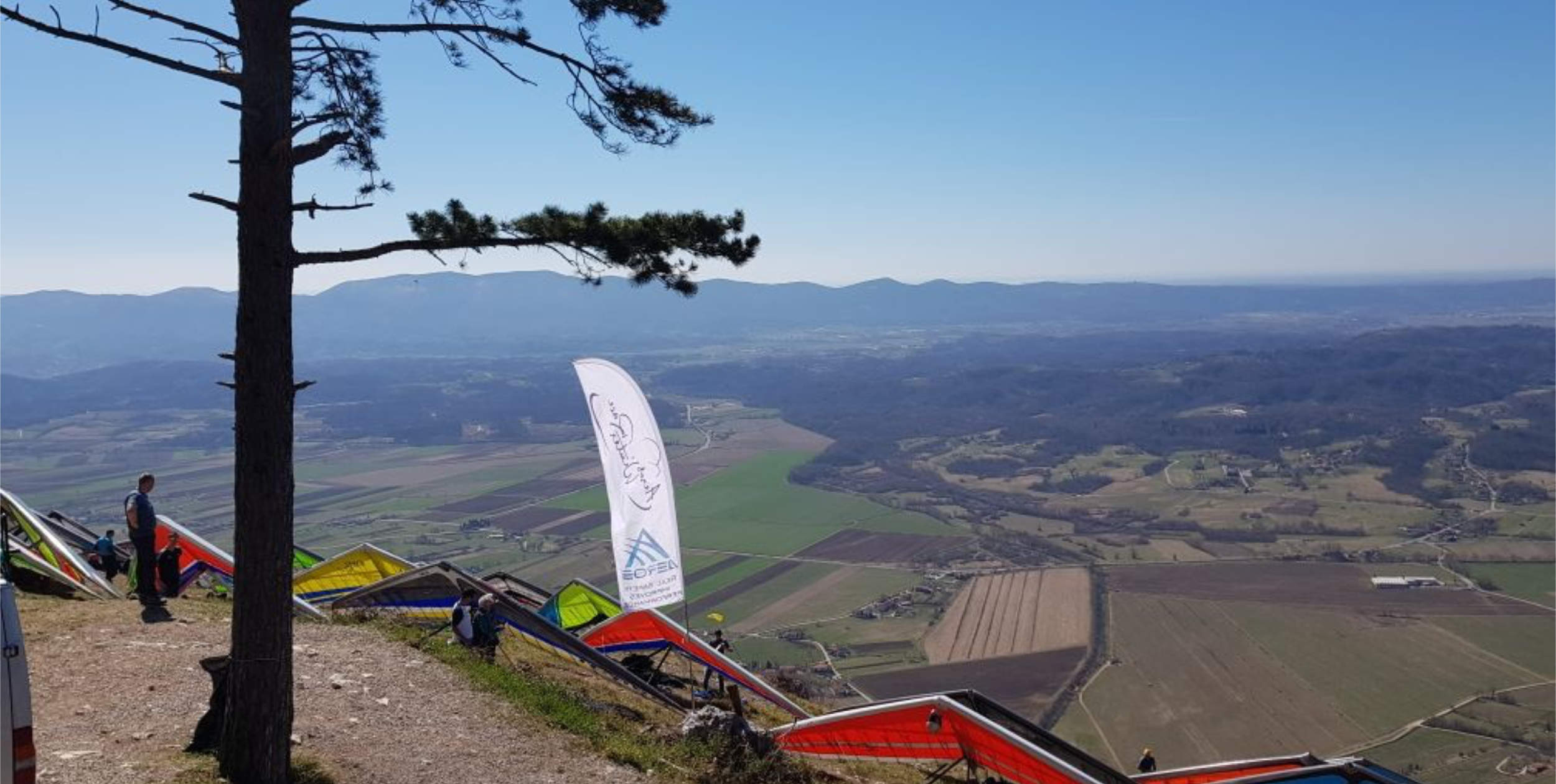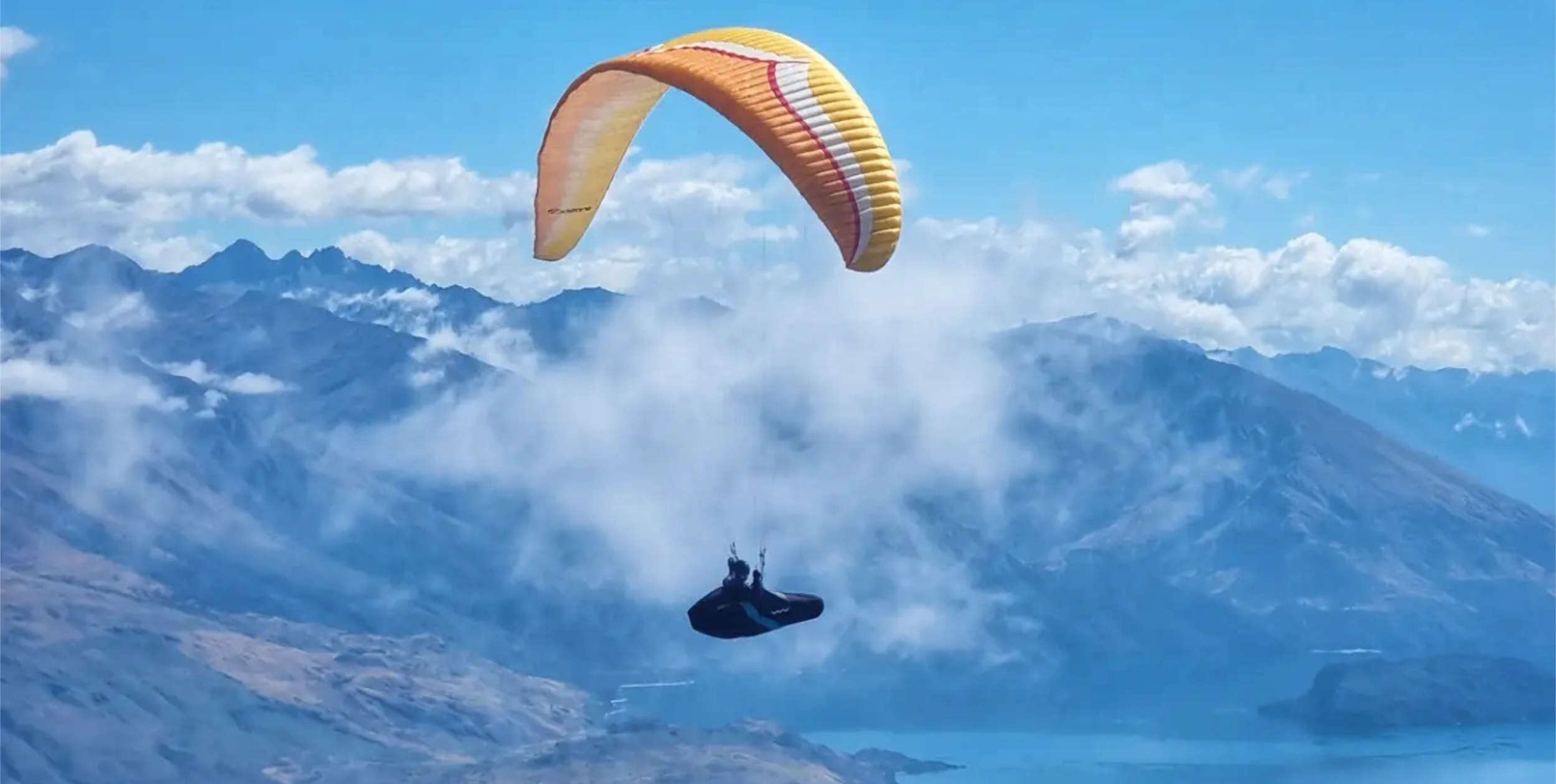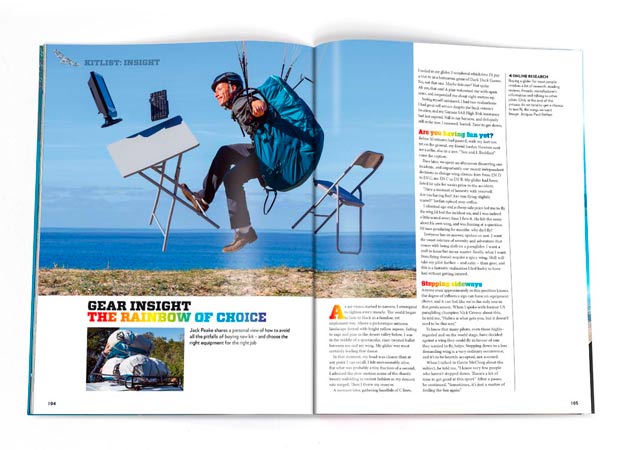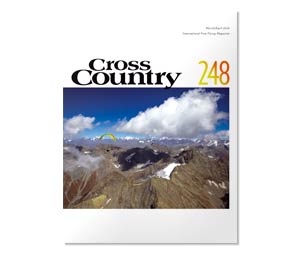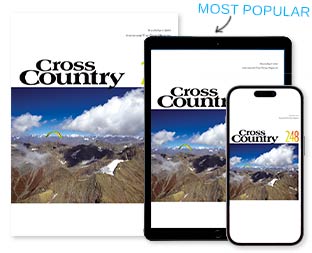Distance hunters: sharpen your knives and focus your sights, there’s big game looming on the horizon! Ahead of the first XC Turkey Paragliding Cup, David Humphrey travels deep into inland Turkey and discovers orbital climbs and potentially record breaking skies
European paraglider pilots are quite familiar with Ölüdeniz, the popular beach resort on Turkey’s pristine Mediterranean coast known for its turquoise-coloured water, relaxing family holidays, and high flights from the 2,000 m high summit of Babadağ Mountain. But no one’s heard of Karadağ or Beyşehir; two flying sites located further inland with ideal conditions for long cross country flights?
In June, a group of European pilots were invited to sample the potential of inland Turkey in a dress rehearsal for XC Turkey’s main event later this year. It provided a rare chance to fly these rarely visited sites that should soon put inland Turkey on the map of “must-fly” locations for pilots with record-setting ambitions.
XC Turkey Paragliding Cup
XC Turkey is the organisational body behind a unique event that takes place this year from 20 September to 3 October. The XC Turkey Paragliding Cup combines a paragliding competition with a cultural tour of this fascinating region There’ll be fun races with lucrative cash prizes and tours of local cultural and historic sites on non-flyable days – perhaps a first in paragliding competitions. Murat Çakmak, organizing director, has been working steadfastly on his dream of expanding the sport of paragliding in Turkey for more than five years.
In recent years he has personally overseen the building of several new launch sites and access roads. Equally as important, he has also developed and maintained good relationships with key government officials, including the governor of Karaman Province, who welcomed us personally at a dedication ceremony on our first day.
Much improved infrastructure
European pilots often complain about the lack of infrastructure for paragliding in Turkey – no ski lifts or cable cars, difficult retrieval, and few ambulances and rescue helicopters should they be needed. Murat is keenly aware of these deficits and has addressed them individually.
On each flyable day, two ambulances accompanied us and a rescue helicopter stood by on call. In addition, due to their location in military restricted areas, armed guards escorted us to each launch site. For retrieval after our long XC flights, mini-buses and jeeps were dispatched to find us and bring us home. Finally, kebab sandwiches and water bottles were made available at all times, so no one went hungry or thirsty. The thoroughness and efficiency of the entire system convinced us of just how well connected Murat is.
Karadağ – big distance country
Our first destination, Karaman, was a regional capital located about 300 km east of Antalya. Situated on a high, arid plain 1,000 m amsl, Karaman is a commercial centre known for its production of wheat and apples. Karadağ Mountain, our launch site, stands alone about 1,200 m above the Anatolian plain, about 20 km outside of Karaman. Atop the mountain sits a heavily guarded military radar station that would not normally be accessible to paraglider pilots without a lot of government string pulling.
Karadağ Mountain has two separate launch sites facing south and northwest. Both appear to be brand-new and are quite large, with room to lay out many gliders at the same time. The mountain is surrounding by flatlands in all directions and the arid climate seems destined to generate the kinds of high-reaching thermals that you otherwise only find in Brazil, South Africa or Texas. Murat told us he was certain that it would be possible to fly more than 200 km from Karadağ. We were about to confirm his suspicion.
First impressions
On the first day at Karadağ, southwest winds favoured a route to the northeast. We launched, and then easily soared up past the radar station in strong thermals that quickly catapulted us to cloud base at 3,400 m. For orientation purposes, Murat gave us the coordinates for Ereğli, a small town about 80 km down wind – a goal that seemed far enough for the first day.
The terrain from that altitude is vast and barren with villages dotting the plains every 10 to 20 km. Murat advised us to land near a village, and then to show the first person we see a little sign in Turkish that he had made for each of us. The sign informed locals that we are paraglider pilots participating in a competition, that we are special guests of the regional governor, and instructed them to call Murat and tell him the name of the village where we landed for retrieval purposes. “Turkish people will help you”, explained Murat at the briefing. He was right.
Down, but never out
That day, about half of our group flew between 100 and 150 km in excellent flatland conditions. I landed near Ambar, a small sheep-herding village in the middle of nowhere. After displaying my Turkish sign, I was led to the typical café that you find in the middle of every Turkish village, where the men seem to sit around all day, drinking tea and discussing village affairs at a maddening slow pace.
There I was first introduced to the village eldest and then treated like the hero who fell from the sky. Like all guests, I was offered the typical tea while we tried to communicate with hand signs and gestures. When I bought up the topic of football- the world cup was on in South Africa at the time – the villagers delighted in telling me that Germany, my country of residence, had no chance at winning the World Cup. “Germany finished!” was their cheerful conclusion. My retrieval came all too soon as I was beginning to enjoy the unique hospitality of a friendly folk.
On the second day at Karadağ, conditions were stronger. We launched earlier, but still too late for some of us who failed to find the way upstairs and were forced to land on the mountain.
Top drawer team goes far
At this point it would be irresponsible of me not to mention that we had several internationally recognized pilots in our group. Among them were French flying ace Patrick Andre, Burkhard “Burki” Martens, a former German XC champion and PWC pilot who is best known for his books on XC and thermal flying, as well as Peter Rummel, the Bavarian flight school-owner who represented Germany in the 2007 X-Alps.
For the top pilots in our group, this was the day to set new records. Burki easily sailed past the day’s destination of Niğde to land 243 km downrange after five hours at altitudes as high as 4,500 m. A new Turkish record had been set, or so we thought, until we got wind of Patrick Andre’s epic flight of 262 km. Patrick flew for over seven hours as high as nearly 4,700 m – an amazing effort and a testimony to the high potential of this otherwise unexplored XC arena. Murat, who had planned to offer a cash prize of € 5,000 for the first flight over 200 km in September’s competition, has now eagerly raised the bar to 300 km.
Lake Beyşehir
After Karaman, we travelled to Beyşehir, a picturesque town situated on a large lake in Konya Province. Here, Murat recently oversaw the building of a new launch site and access road on a mountain overlooking the lake. As in Karaman, local dignitaries, including the mayor, who were there to see what paragliding is all about, greeted us.
The local interest in our sport is driven by the potential to attract European pilots to holiday in the area. While the launch site is only about 500 me above the lake, it also offers great XC potential due to the combination of the nearby Taurus Mountains to the west and the arid flatlands to the east. In addition, the site offers excellent soaring conditions in laminar winds blowing off the lake, as we experienced on one magical soaring evening.
Then coastal calm
The third and final leg of our trip took us to the Mediterranean Coast southwest of Antalya. Tahtali Mountain, located on the rocky coast about 250 km east of better-known Ölüdeniz, boasts a new European-built cable car that, with a length of nearly 4.4 km, is the longest in Europe, and the second longest in the world. Clouds prevented us from flying from Mount Tahtali’s 2,365 m summit, so we launched instead from nearby Adrasan Tozlu Mountain and soared near the summit about 1,000 m above the glittering Mediterranean Sea before landing on the beach near our hotel.
With feedback from our experiences in Turkey in June, Murat Çakmak is fine-tuning the program and logistics for the XC Turkey competition to be held starting on 20 September. For bad weather or windy days he has also arranged cultural visits to historic sites throughout the region. The goal is to show off not only Turkey’s XC potential, but also the country’s treasure-trove of fascinating history and culture. Accommodation is basic as there are few four-star hotels in these regions, but the food is great and the Turks’ hospitality simply has to be experienced.
There are limited places on the XC Turkey Paragliding Cup, More information on the September event is available at www.xcturkey.com.


